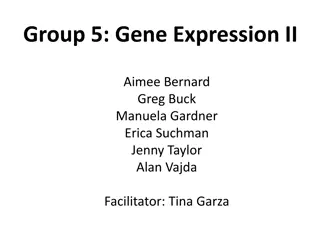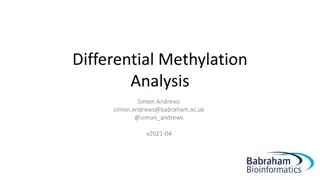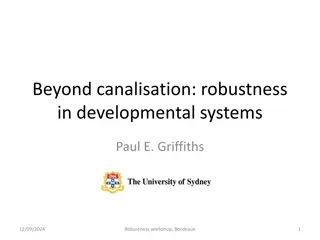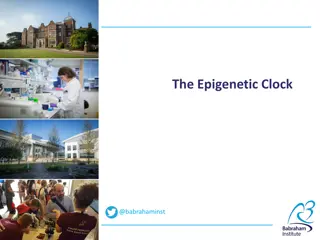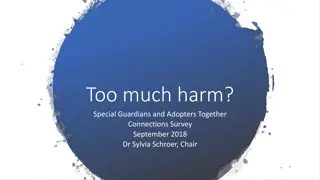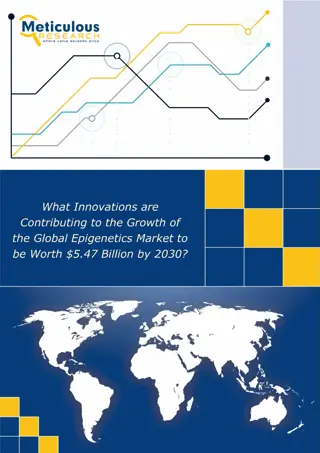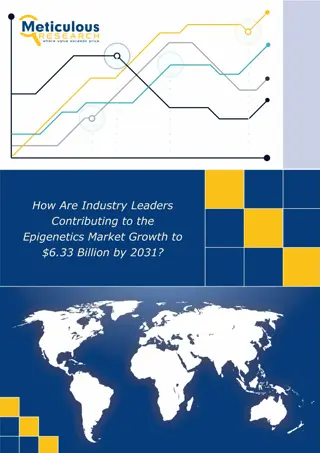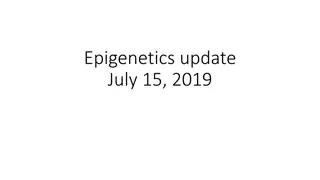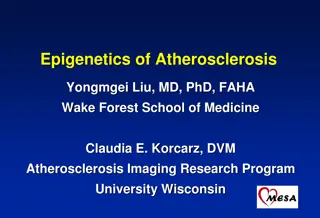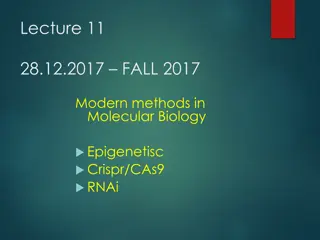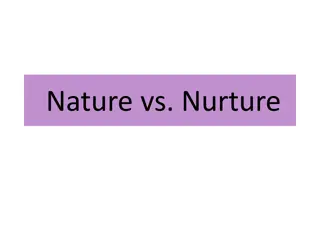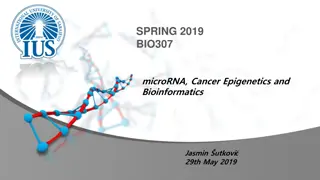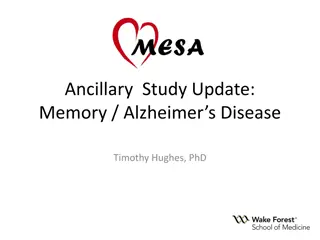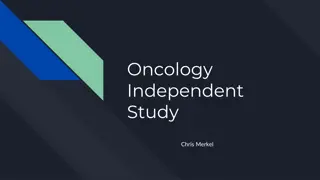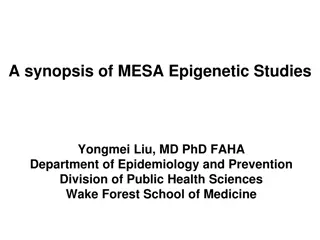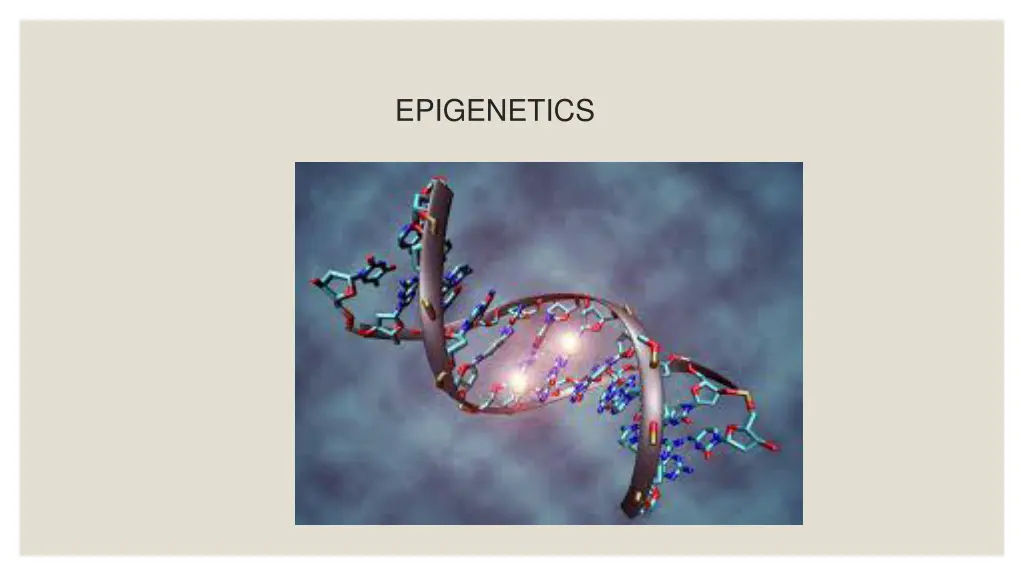
Understanding Epigenetics and Gene Expression Regulation
Learn about epigenetics, including DNA methylation and histone modifications, that regulate gene expression without altering the DNA sequence. Discover how chromatin conformation and remodeling enzymes play crucial roles in modulating cellular functions. Explore the impact of epigenetic changes on gene expression and their implications in cancer and other diseases.
Download Presentation

Please find below an Image/Link to download the presentation.
The content on the website is provided AS IS for your information and personal use only. It may not be sold, licensed, or shared on other websites without obtaining consent from the author. If you encounter any issues during the download, it is possible that the publisher has removed the file from their server.
You are allowed to download the files provided on this website for personal or commercial use, subject to the condition that they are used lawfully. All files are the property of their respective owners.
The content on the website is provided AS IS for your information and personal use only. It may not be sold, licensed, or shared on other websites without obtaining consent from the author.
E N D
Presentation Transcript
Definition Focused on the regulation of gene expression by Heritable modifications that do not change the DNA sequence.
DNA methylation Well known epigenetic change that is important in X chromosome inactivation, gene Imprinting and cancer.
Cytosine is both methylated and demethylated by variety of enzymes. Initial methylation DNA 5 cytosine methyltransferases Maintance another type of DNA 5 cytosine methytransferase It involves 3 types of TET Family of dioxygenases Catalyse the conversion of 5 hydroxymethylcytosine ( neuronal cell and regulates gene expression)
Gene expression is altered by methylation via several mechanism. Most direct effect- by altering the Transcription Factors to bind to promoters. It decreases the affinity of Transcription Factors to DNA promoters and enhances the binding of specific Transcription Factor Eg: cancer
Chromatin conformation regulation Cellular functions requires proteins to interact with DNA Histone Nucleosome Heterochromatin Decreases the gene expression
Chromatin conformation 1. Histone modification 2. Histone variants 3. ATP dependent remodeling enzymes
Histone modification 1. Acetylation 2. Methylation 3. Phosphorylation
Histone variants Known for many decades Function not well established H3.3 and H2A.Z ---- regulation of gene expression H3.3 incorporated into chromatin Independent of replication and associated with active chromatin
ATP dependent remodeling enzyme Use energy from hydrolysis of ATP to change structure of chromatin Grouped into 4 families 1. Non fermentable (SWI/SNF) 2. Initiation Switch (ISWI) 3. Inositol requiring 80 ( INO 80) 4. Chromodomain (CHD)
General properties Specific attraction with nucleosome Attraction with modified histone tail residues Contains ATPase domain ATPase regulatory function Ability to interact with transcription factors
SWI & SNF sliding and ejecting of nucleosome but do not function in chromatin structure ISWI changes nucleosome spacing through sliding necessary for DNA replication Interacts with unmodified histone tails and function to regulate transcription CHD slide and eject nucleosome; regulates transcription INO 80 insertion n the middle of ATPase Domain Promoting transcription and DNA repair
Non coding RNA Most expressed RNA is not translated into proteins Only mRNA translated into proteins and represent 1% to 5% of total RNA. Much of non coding RNA known and includes rRNA and tRNA In last two decades, two large group of non coding RNA have been discovered 1. Short non coding RNA 2. Long non coding RNA
Short non coding RNA 1. Micro RNA 2. Small interfering RNA 3. Piwi interacting RNA
Long non coding RNA Greater than 200nucleotide The extent of long RNA predicted in hundreds of thousand in vertebrates Eg: long non coding RNA XIST associated with polycomb group complex 2 inactivates X chromosome by inducing heterochromatin formation
Function of non coding RNA not known but refered to as competiting endogenous RNA ( CeRNA) Competition for shared mi RNA binding site in untranslated region


